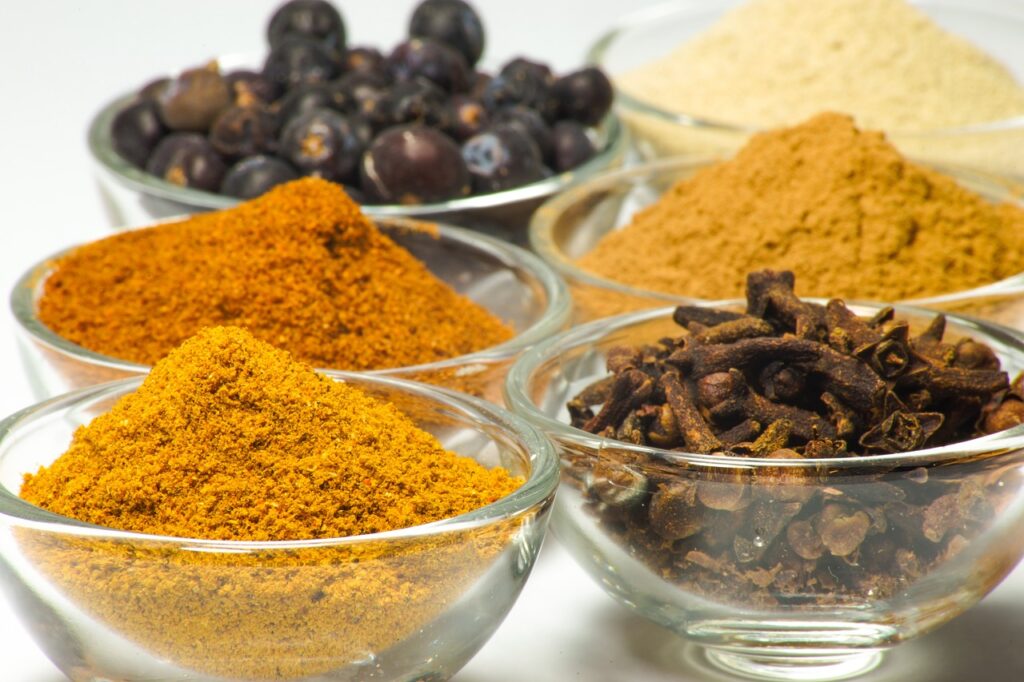Curry Spice: A Flavorful Journey in Culinary Arts
Curry spice is a vibrant and aromatic blend that has captivated the taste buds of millions around the globe. It is renowned for its ability to infuse dishes with warmth and complexity, making it a staple in kitchens, especially within Indian cuisine. Understanding curry spice entails delving into its components, uses, and the cultural significance it carries.
The Essence of Curry Spice
Curry spice is not just a single spice but a medley of various seasonings, herbs, and flavors meticulously combined to create a unique taste profile. Most notably, this blend is most commonly associated with Indian cooking, where it acts as a foundational ingredient in many traditional dishes. In India, what we refer to as “curry” is often called “masala,” which translates to “mix.” This term aptly describes the blend of spices that form the backbone of countless recipes.
Components of Curry Spice
The composition of curry spice can vary widely, often including as many as twenty different spices and herbs. This diversity allows for a range of flavor profiles, from mild to intensely spicy. Here are some of the most common ingredients found in curry spice blends:
- Coriander: Often used in both seed and ground forms, coriander adds a citrusy and slightly sweet note to the mix. Its lightness balances the deeper flavors of other spices.
- Ginger: Fresh or dried ginger is included for its warm, spicy flavor that adds depth to dishes. Its health benefits, such as anti-inflammatory properties, make it a popular choice in various cuisines.
- Turmeric: Known for its vibrant yellow color, turmeric is a fundamental ingredient in curry spice. It not only imparts a warm, earthy flavor but also provides numerous health benefits, including antioxidant properties.
- Onion: Dehydrated onion or onion powder is often included, contributing sweetness and a savory base to the blend.
- Cardamom: This aromatic spice brings a sweet and floral quality. Its unique flavor elevates the curry to a more sophisticated level, often used in both sweet and savory dishes.
- Garlic: Just like onion, garlic adds a pungent, savory depth to curry, enhancing its overall flavor.
- Chili Peppers: These can range from mild to hot and are a key component for those who enjoy a bit of heat in their dishes. The amount and type of chili used can significantly affect the spiciness of the final product.
- Cloves: With their strong, sweet aroma and flavor, cloves provide a warm, slightly bitter note that rounds out the spice blend.
- Nutmeg: A pinch of nutmeg adds warmth and sweetness, complementing the other spices perfectly.
- Cinnamon: Often associated with sweet dishes, cinnamon brings a warm and comforting element to curry spice, enhancing its complexity.
- Cumin: Known for its rich and earthy flavor, cumin is another essential component that adds depth.
- Fennel: With a sweet, anise-like flavor, fennel seeds contribute a unique taste that balances the heat of chili peppers.
Variations of Curry
Curry spice can be found in various forms, including curry powder and curry paste, each offering unique flavors and culinary applications.
Curry Powder
Curry powder is the most common representation of curry spices in Western cuisine. It is typically a dry blend that can vary greatly from one brand to another, depending on the specific spices and their proportions.
Curry Paste
In contrast, curry paste is a wet mixture that includes spices combined with liquids like oil, stock, or coconut milk. The intensity and heat of curry paste can vary significantly based on the color:
- Green Curry Paste: Made with green chilies, this paste is known for its sharp, intense heat. It often includes fresh herbs like cilantro and Thai basil, giving it a bright flavor.
- Yellow Curry Paste: Characterized by its vibrant yellow hue from turmeric, this paste offers a milder, aromatic flavor profile. It is commonly used in dishes that require a gentler spice.
- Red Curry Paste: Generally seen as the least spicy of the three, red curry paste has a rich flavor due to the variety of red chilies used. It still packs a punch but provides a more balanced heat than green curry.
Culinary Uses of Curry Spice
Curry spice is incredibly versatile and can be incorporated into a wide range of dishes. Here are some popular applications:
- Curries: The most obvious use is in creating curries, where meat, fish, or vegetables are simmered in a sauce made from curry spice, tomatoes, and often coconut milk or yogurt, creating a rich and hearty dish.
- Marinades: Its bold flavor makes it ideal for marinating meats and seafood. A marinade containing curry spice can infuse proteins with deep flavors, enhancing grills or roasts.
- Soups and Stews: Adding curry spice to soups and stews provides warmth and complexity, turning simple broth into a vibrant and aromatic meal.
- Vegetarian Dishes: Whether in lentil curries, chickpea stews, or vegetable stir-fries, curry spice enhances the flavors of plant-based dishes, offering satisfying alternatives to meat.
- Sauces and Dressings: Incorporating curry spice into sauces and dressings can elevate salads and dips, creating a fusion of flavors that tantalizes the palate.
- Rice and Grains: Cooking rice or grains with curry spice infuses them with flavor, making them delicious side dishes that are anything but plain.
The Perfect Pairing: Coconut Milk and Curry
Coconut milk is frequently paired with curry spice in various recipes. This combination not only balances the heat but also adds a rich, creamy texture that enhances the overall dish. The natural sweetness of coconut milk complements the spices, creating a delicious harmony in flavors.
Storing Curry Spice
To preserve the robust flavor of curry spice, it is essential to store it properly. Use an airtight container and keep it away from light and moisture. Ideally, curry spice should be consumed within two months of preparation to ensure maximum freshness. If you notice a dullness in flavor or aroma, it may be time to make a new batch.
Creating Your Own Curry Spice Blend at Home
For those interested in crafting their own curry spice blend, here’s an easy and customizable recipe:
Ingredients:
- 2 tablespoons ground coriander
- 1 tablespoon ground cumin
- 1 tablespoon ground turmeric
- 1 tablespoon ground ginger
- 1 teaspoon cinnamon
- 1 teaspoon chili powder (adjust based on heat preference)
- 1 teaspoon ground cardamom
- ½ teaspoon ground cloves
- ½ teaspoon black pepper
- 1 teaspoon fennel seeds
- 1 teaspoon ground fenugreek
- ½ teaspoon salt
- Optional: ½ teaspoon cayenne pepper for additional heat
Preparation Method:
- In a mixing bowl, combine all the ingredients and stir well until evenly mixed.
- In a non-stick skillet, lightly toast the spice blend over low heat for a few minutes, stirring frequently to prevent burning. This step enhances the flavors.
- Allow the mixture to cool completely before transferring it to an airtight jar for storage.
Adjusting Spice Levels
One of the beauties of homemade curry spice blends is the ability to tailor them to individual preferences. Those who appreciate more heat can increase the amount of chili powder or cayenne pepper, while those who prefer milder flavors can reduce the spices accordingly. The art of seasoning lies in experimentation, encouraging home cooks to find their perfect balance.
The Cultural Significance of Curry
Curry spice blends carry cultural importance that extends beyond their immediate culinary applications. They represent the rich heritage of Indian and South Asian cooking and reflect the blend of influences from various regions and traditions. Each family may have its own recipe or preferred blend, showcasing personal tastes and local ingredients.
Curry is often associated with communal dining, where dishes are shared among family and friends, fostering a sense of togetherness and celebration. The preparation of a curry can be a labor of love, often involving multiple steps and the use of fresh ingredients—making the final dish not just a meal but an experience.
Conclusion
Curry spice is more than just a seasoning; it is a gateway to a world of flavors, cultures, and culinary traditions. From its rich and complex compositions to its versatility in various recipes, curry has established itself as a beloved ingredient worldwide. Whether used in a traditional curry, a marinade, or simply to spice up a vegetable dish, curry spices bring warmth and vibrancy to every meal.
By understanding its components, learning how to create your own blend, and exploring its uses in cooking, you can appreciate the depth and richness that curry spice brings to the table. So, gather your ingredients, unleash your creativity in the kitchen, and savor the delightful and aromatic experience of cooking with curry spice.


